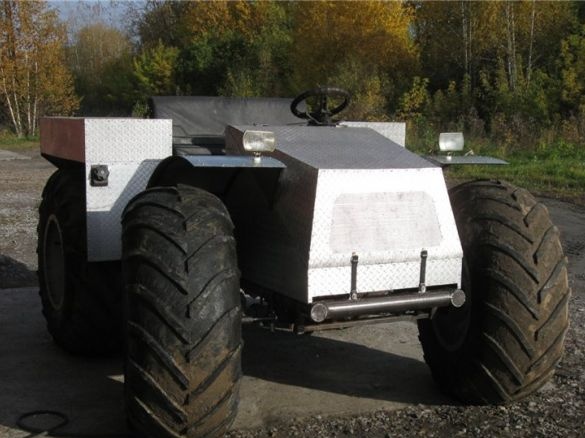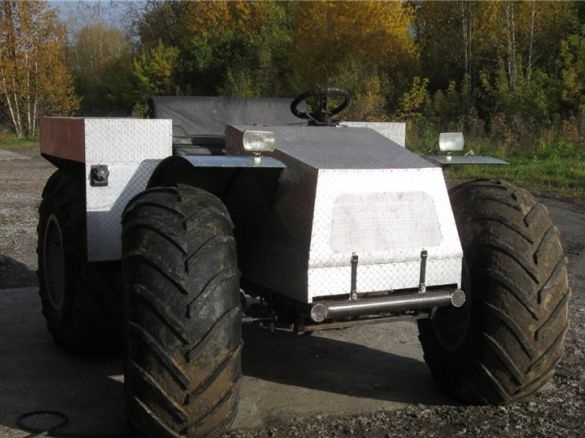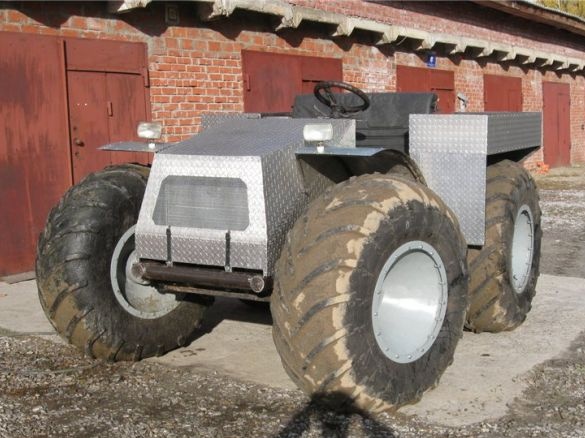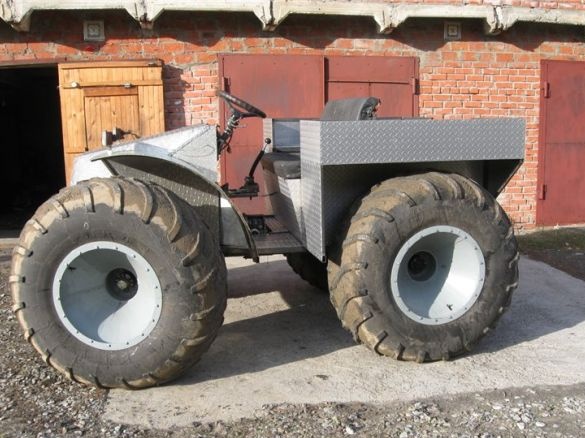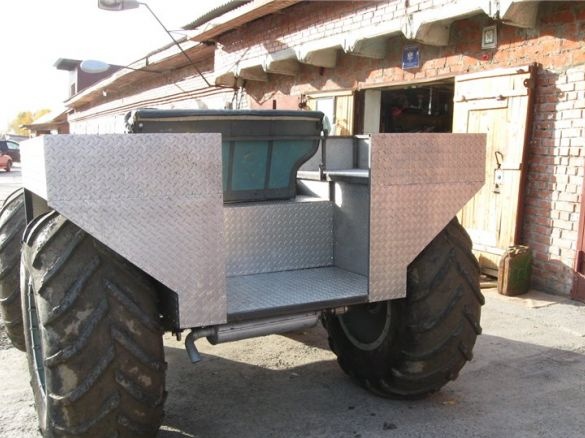This article will talk about the creation of an all-terrain vehicle design type "cheburator" lightweight. Its distinguishing feature from other all-terrain vehicles of this type will be removable bridges, which are planned to be attached with clamps to the frame. The purpose of the all-terrain vehicle of this design is transport for skiing in forests and bolts, in particular for hunting and moving in hard-to-reach places. Therefore this all-terrain vehicle must be able to not only overcome various earthen obstacles, but also be able to swim. In addition, since it will be problematic to get a broken car out of these inaccessible places, therefore the all-terrain vehicle Cheburator Light should be strong and resistant to breakdowns.
To create an all-terrain vehicle of a similar design, the author involved the following parts:
1) Those bridges, with the possibility of quick dismantling, were removed from the UAZ, and the satellites were pre-welded.
2) As for the tires, these are the usual so-called "rags". If someone needs accurate marking, it is presented with brackets (ИЯВ-79 (Т-150) 1400-540-640)
3) the steering column was removed from the Niva. In general, the steering is planned type of rack with power steering.
4) The internal combustion engine as well as the gearbox were removed from oki.
As a standard, the first step in the construction of an all-terrain vehicle is wheels. The following tires are shown after stripping:
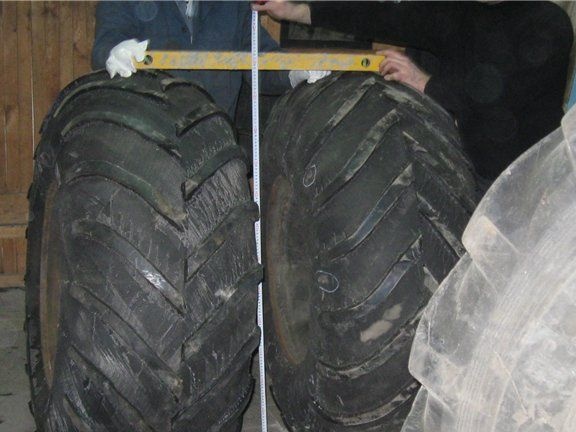
As you can see their height is about 130 centimeters, this is enough to easily climb over fallen trees in the forests, and so they will serve as excellent propellers on the water.
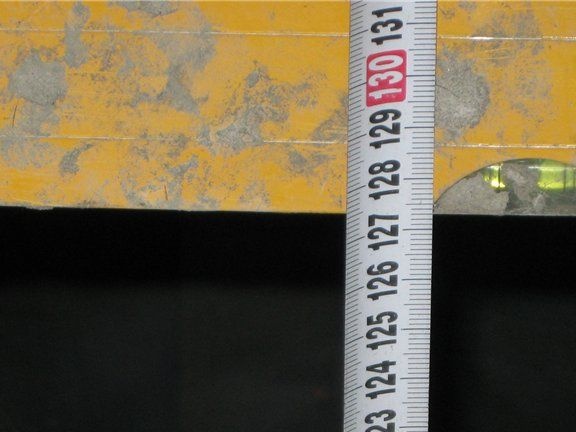
The frame was welded independently, rather massive and strong, in order to withstand the load:
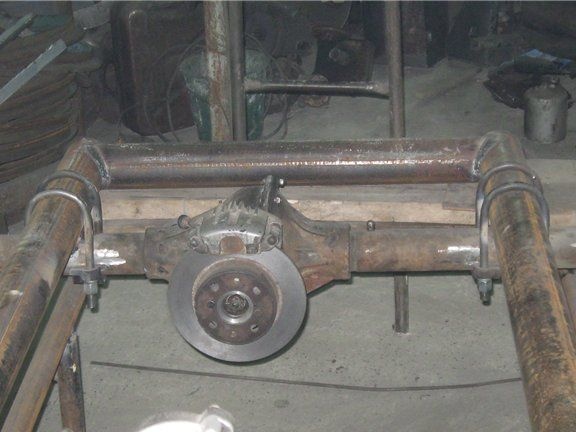
An engine has already been supplied here, as it will be in the end. There are no special frills in such an engine installation, everything has been tested on other all-terrain vehicles quite successfully.
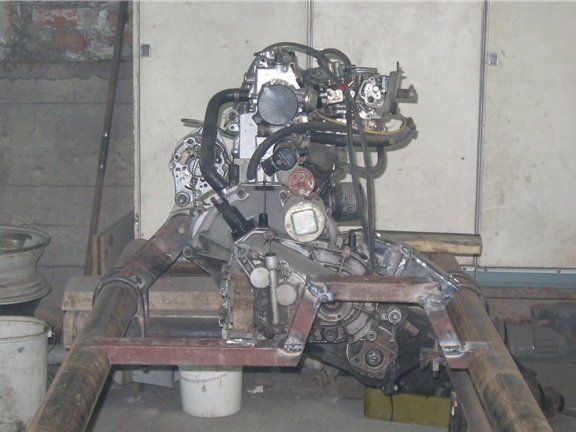
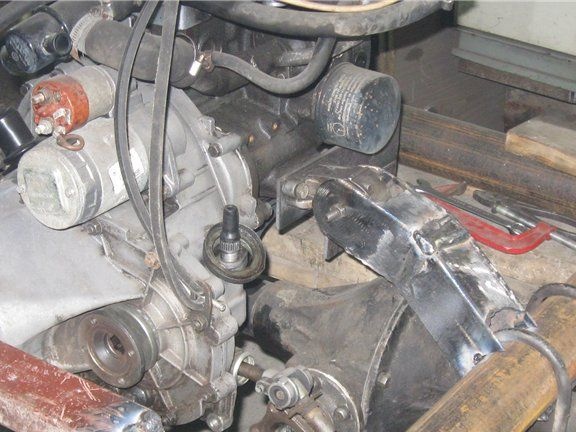
Here, probably, the most interesting thing is the implementation of fixing the bridge to the frame:
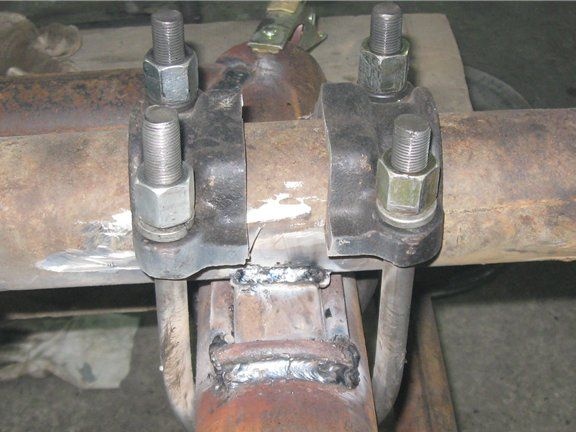
Further, the author proceeded to the stage of manufacturing suitable rims for tires:
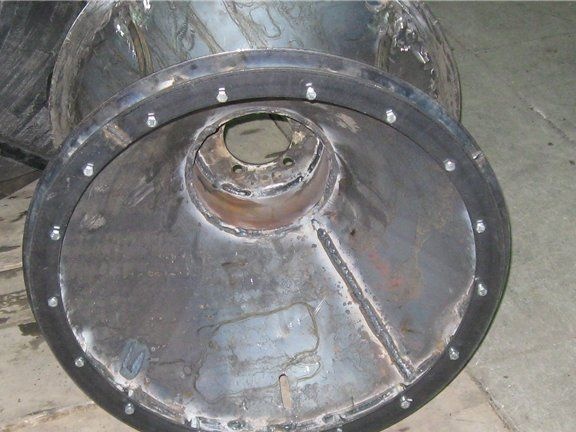
And here it is already possible to see the wheels fully assembled and ready for installation:
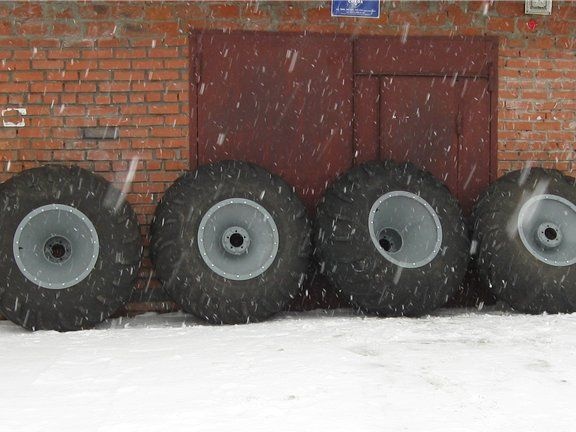
The transfer case was attached and deployed in a similar manner:
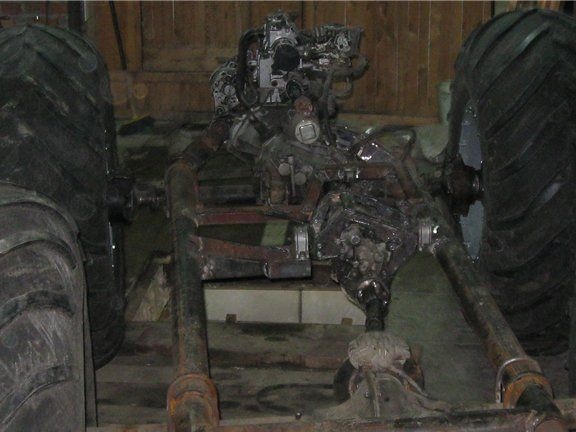
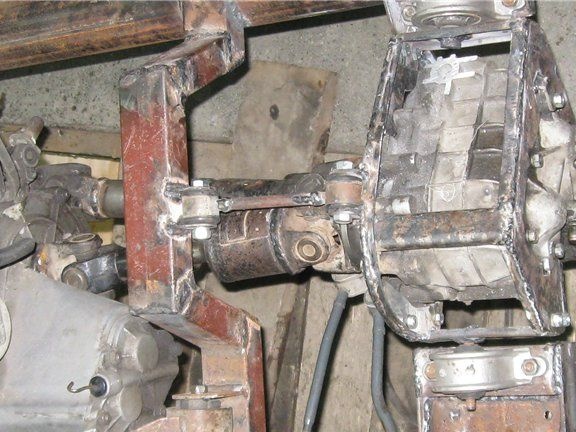
Further, the author took up the steering rack, so far without a clutch:
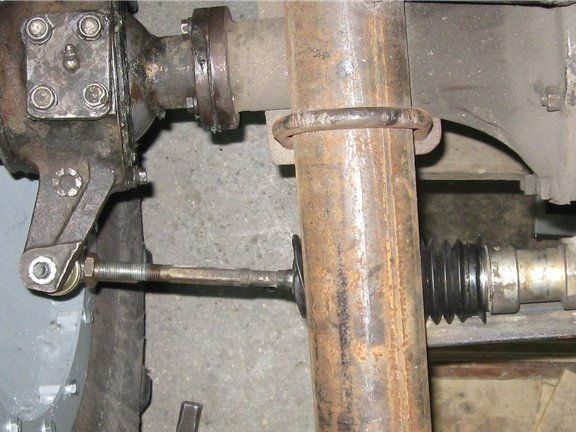
A Nissan Gora pump was installed, but the timing belt was taken from a Lada:
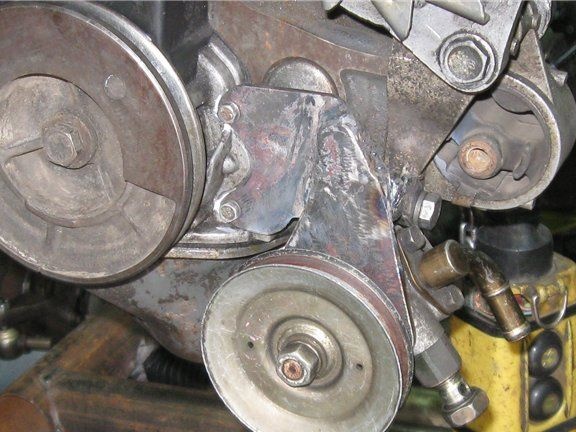
After a little fit, the belt fits perfectly into the design:
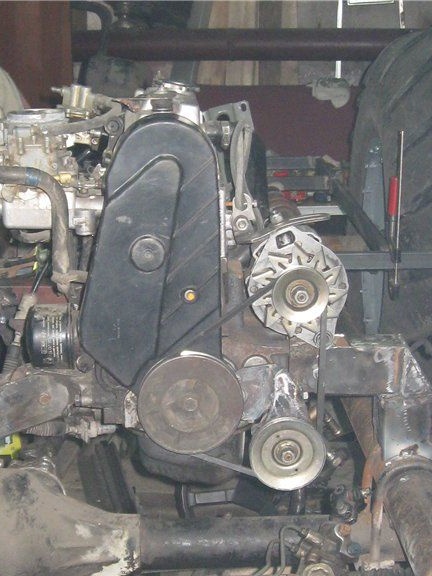
In the same photo you can see the implementation of the connection of the cable backstage:
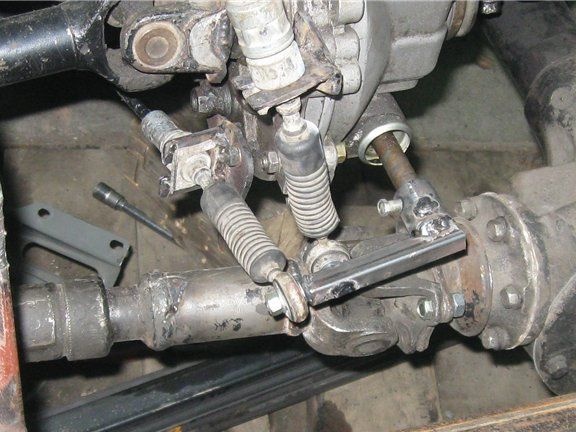
I would like to talk about her separately. When first gear is engaged, both the cable and the shaft are “pulled in”. Switching speeds does not cause any particular problems, even despite the fact that the acquired lever was slightly cut off. The shaft extends also quite simply, but turning on the axis can cause some problems. Therefore, when installing the cables, it is recommended not to particularly zeal with the twisting of the tips, as it will be much harder to turn on. Tips, by the way, were delivered from UAZ through the sleeve, the author decided not to experiment with the seal.
The next step was to install the pedal assembly and hydraulics to engage the clutch:
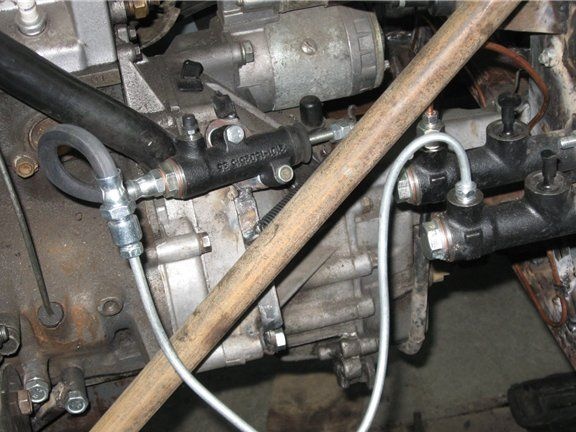
It was decided to make the steering wheel reclining. The decision was made only because of the convenience of landing:
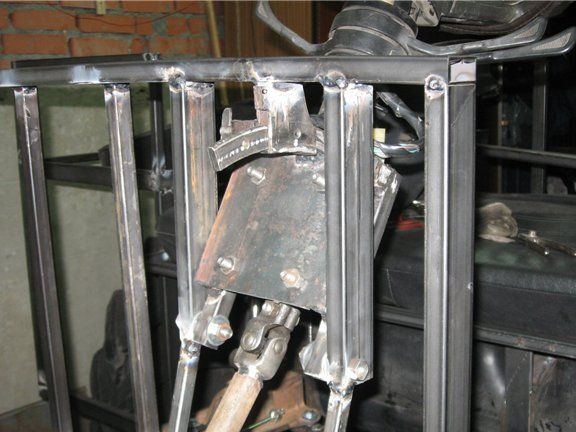
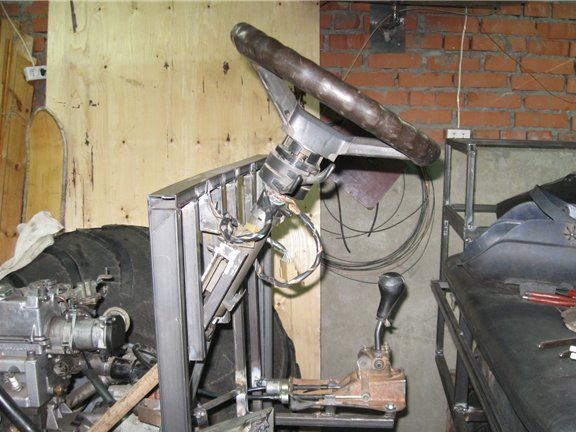
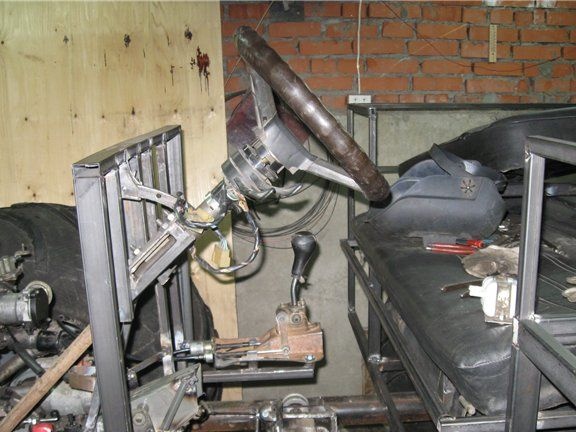
But in this way the fuel tank was installed:
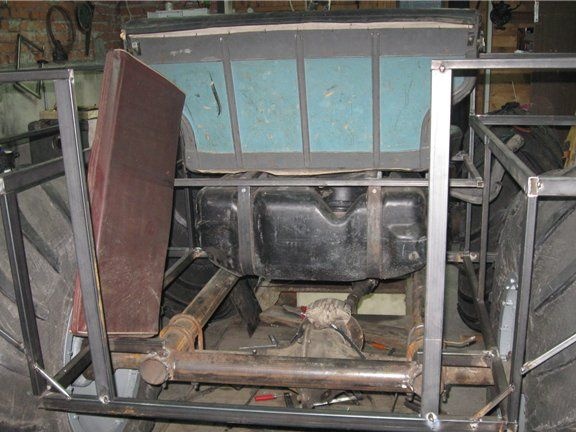
The first exit on a car not yet quite ready:
Here is another test drive video:
And here you can see the completely finished casing of the all-terrain vehicle:
Seen from the sides, it looks like this:
ATV rear view
Here is the video of the departure of the already fully-equipped all-terrain vehicle Cheburator Light with removable bridges
And here the author decided to chase beavers on the lake:
as you can see the magnificent buoyancy and speed of movement on water.
What was modeled and created an excellent all-terrain vehicle, a standard design with a twist in the form of an unusual attachment of bridges.
This concludes my review of the Cheburator Light all-terrain vehicle with removable bridges. The author of this creation of engineering Vitaly aka "Griny" from the Tomsk region, the city of Seversk.

